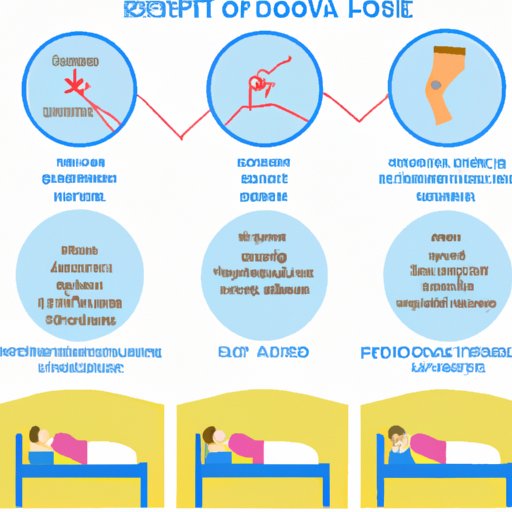Introduction
Bed sores, also known as pressure ulcers, are areas of skin damage caused by prolonged pressure or friction on the skin. They usually occur in people who are immobile due to age, illness or disability, and can have serious health implications if not treated promptly. So, how long does it take to get bed sores? The answer will depend on a number of factors, including the length of time someone is immobile, the level of care they receive, and their overall health.
Diagnosing and Treating Bed Sores: How Long Does it Take?
The first step in treating bed sores is recognizing the symptoms. Early signs of bed sores include redness, pain, and tenderness when touched. As the condition progresses, the skin may break down, forming blisters, open sores, or even deep wounds. In some cases, the affected area may become infected. It’s important to seek medical attention as soon as possible to avoid further complications.
Once the diagnosis is made, the doctor will create a treatment plan based on the severity of the bed sores. Treatment options may include dressing changes, antibiotics, and special wound care products. Depending on the severity of the sores, recovery can take anywhere from a few weeks to several months.
It’s also important to note that if bed sores develop due to neglect or lack of care, the healing process may be much slower. In these cases, it’s essential to ensure that proper care is provided in order to speed up the healing process.

Prevention is Key: Understanding the Timeline for Bed Sore Development
The best way to avoid bed sores is to prevent them in the first place. There are several factors that can increase the risk of developing bed sores, such as being bedridden, having poor nutrition, or having a weakened immune system. It’s important to be aware of these risk factors and take steps to reduce them.
For example, if someone is bedridden, it’s important to reposition them every two hours to reduce pressure on the skin. Special cushions and mattresses can also help reduce the risk of bed sores. Additionally, making sure the person gets adequate nutrition and hydration can help speed up healing and reduce the risk of infection.
The Risk Factors of Bed Sores and How to Reduce Them
Bed sores can be caused by a variety of factors, including age, weight, and medical conditions. People who are overweight or obese are more likely to develop bed sores due to increased pressure on the skin. Additionally, certain medical conditions, such as diabetes, can increase the risk of bed sores. It’s important to discuss any potential risk factors with your doctor in order to develop a plan to reduce the risk of bed sores.
In addition to addressing potential risk factors, it’s important to practice good hygiene and keep the affected area clean. Cleaning the area daily with soap and water can help reduce the risk of infection and speed up the healing process.

What You Need to Know About Bed Sore Healing Times
The healing time for bed sores will vary depending on the severity of the condition. Generally, bed sores go through four stages of development: Stage 1, Stage 2, Stage 3, and Stage 4. Each stage has its own timeline for healing, which can range from a few days to several weeks.
Stage 1 bed sores typically heal within a few days with proper treatment. Stage 2 bed sores may take up to two weeks to heal, while Stage 3 and Stage 4 bed sores can take several weeks or even months to heal. It’s important to note that healing times may vary depending on the individual and the severity of their condition.
Conclusion
Bed sores can be a serious condition, but with proper treatment and prevention, they can be managed. Knowing the timeline for bed sore development, diagnosis and treatment, as well as how to prevent them, can help you ensure that you or your loved one receives the care they need.
If you or someone you know is at risk for bed sores, it’s important to talk to your doctor about ways to reduce the risk. With the right care and prevention, you can reduce the chances of developing bed sores and ensure a speedy recovery.
For more information on bed sores, please visit the National Institutes of Health website or speak to your healthcare provider.
(Note: Is this article not meeting your expectations? Do you have knowledge or insights to share? Unlock new opportunities and expand your reach by joining our authors team. Click Registration to join us and share your expertise with our readers.)
